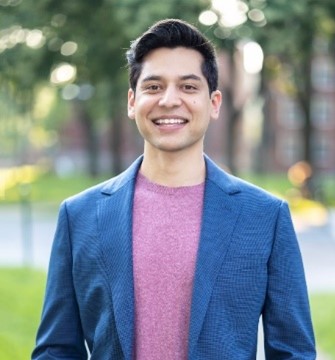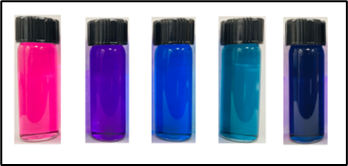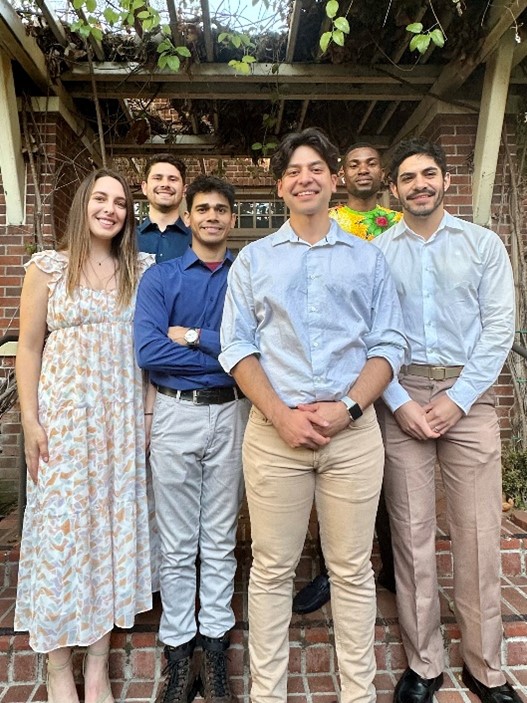
“Science has always impacted me, but I didn’t realize how much until I actually became a scientist,” says Elias Picazo, Ph.D., assistant professor of chemistry at the University of Southern California in Los Angeles. We talked to Dr. Picazo about his path to becoming a scientist, some of the challenges he faced along the way, and his research inventing new ways to make chemical bonds.
Get to Know Dr. Picazo
- Books or movies? Movies
- Beach or mountains? Mountains
- Favorite music genre? Pop
- Rainy or sunny? Sunny
- Salty or sweet? Sweet
- Music or podcast? Podcast
- Washing glassware in the lab or dishes in your kitchen? Glassware
- Favorite lab tool? Magnetic stirrer
Q: How did you become interested in science?
A: My family and I lived in the desolate California Valley until I was about 7 years old and only spoke Spanish at home. I learned English when we moved to a small town so my brother and I could go to school. I had a slow start, but I was always good at math and science. I found myself gravitating toward chemistry, and my high school teachers encouraged me to consider college.
Q: What were the next steps on your career path?
A: I ended up attending the University of California, Santa Barbara, where I studied chemistry and math, but I didn’t go in as a chemistry major. With some encouragement from a teaching assistant, I introduced myself to Armen Zakarian, Ph.D., who let me begin working in his lab. That’s when I started making the connections that molecules make up everything around us, that science has always impacted my life, and that continuing in chemistry was something I wanted to do.
I went to the University of California, Los Angeles, for graduate school and studied with Neil Garg, Ph.D. I had no examples of scientists in my family, and Dr. Garg was helpful in so many ways beyond just my formal education. When he asked me what I wanted to do at the end of my Ph.D. work and I told him I really enjoyed research, he suggested I apply for a postdoctoral position. I did, and I joined the lab of Eric Jacobsen, Ph.D., at Harvard University in Cambridge, Massachusetts. I think I became a chemist because of a lot of inspiration from generous people in my life who believed in me and guided me.
Q: What do you research in your lab?
A: In my lab, we invent new organic chemistry methods that can then become tools others can use. I like two types of problems: The first is inventing something that no one has ever thought of but could be used as a tool to solve problems, and the second is solving a problem that people have been trying to figure out for a very long time. One area we’re exploring that fits into the first category is using iron to catalyze new reactivity to make valuable bonds between atoms.

Another area we explore is rearranging bonds, which fits into that second category because the specific rearrangements we’re looking at have been limited since 1850. We’ve developed a new reaction and used it to synthesize molecules called photoswitches that respond to light. They start as colored, linear molecules, and the rearrangement transforms into noncolored, cyclic, ionized molecules. These photoswitches respond to visible light, which makes them unique because most photoswitches require high-energy, UV light for activation. The resulting colorless product can revert to the colored form when it’s exposed to heat.
With two different stimuli that control which form the switch takes, the forward direction being light driven and the reversion being heat, we envision this having many applications. I think it would be really interesting if these photoswitches made it into a medical device or were used in photopharmacology—where clinicians can control the activity of medicine using light. It’s the possibility of these layered contributions making an impact on society that makes science so interesting to me.
Q: How do your past mentors affect how you mentor now?
A: I had mentors who were kind. I don’t know if I gravitated towards them because of their kindness, but I know I ultimately chose their labs because their science is impactful and distinguished. They just happen to also be phenomenal mentors. I’ve taken a lot of inspiration from and modeled my mentorship program after qualities that I experienced in the Garg and Jacobsen labs, both scientifically and on a personal level.
Q: What do you see as your biggest accomplishment so far?

A: Every phase has accomplishments, and when you make it to the next phase, it’s easy to let the latest accomplishments overshadow the previous ones. I try to internalize and remember the joy I feel upon achieving goals in each phase. When I first joined the Zakarian lab as an undergraduate, I knew immediately that I wanted to be a professor because it seemed challenging, rewarding, and esteemed. So, I would say my biggest accomplishment so far has been accomplishing that goal and getting this faculty position in 2022. It was challenging and took me 10 years to get here. But since then, I’ve achieved so many personal accomplishments, like publishing my first papers during my training or our first few as an independent research team. I’m incredibly proud of the work that we’ve done in my lab.
Q: What are some challenges that you’ve faced?
A: Looking back, I think the biggest problem I faced is that I was just simply unaware of what was possible for a career path. When I was very young, we were living in a place with no water or electricity, and I’d received no education. But even when we moved to a small town, we were only exposed to teachers or people with manual labor jobs like agriculture or oil—definitely not scientific inventors or professors. Just knowing how to navigate the education system was a challenge, but I had discerning people around me who were always preparing me for the next phase.
Another challenge was the financial aspect. Thankfully, I had a scholarship for undergrad, because I don’t think I would have gone had I needed to pay. I’d always thought that after undergrad, your options were to go to law school or medical school—both of which required a lot of money and didn’t seem like something I could do. But then I started learning that you can get paid to earn a Ph.D. To me that’s the American dream—to get paid to better yourself, to learn to do what you like, and then to end up with an even better career than you would have had otherwise. Still today, it feels too good to be true!
I felt so lucky to be doing challenging scientific work, advancing myself, and getting paid. Because of my reference point, failure—in the lab, in an experiment, in a reaction—was still success to me because of what I was doing in the bigger picture. Of course, a bad reaction wasn’t fun, but I had friends, food, and shelter. Overall, I feel very fortunate.
Q: What are you involved in outside the lab?
A: I go back to my hometown and tell students about how I became a professor and how exciting it is to invent new reactions. I talk about how molecules make up everything around us and how I get to make the molecules—that’s just unreal and exciting. We also do a lot of outreach here in the local community, like going to elementary schools and performing experiments to get students involved in chemistry. Both of these projects are centered around the same idea of introducing this career path to students who might have not considered it yet.
Q: What advice would you give to students who are interested in a career in science?
A: Try it! The day-to-day of science is very different from reading or learning about science in the classroom. Start doing experiments and see if you like it. If you don’t, try to apply your love for science in ways that aren’t experimental, because there are a lot of different scientific careers. And if you run experiments and don’t get your desired outcome, instead of being discouraged, feed that result back into your data bank and move forward.
Dr. Picazo’s research is supported by the NIGMS Maximizing Opportunities for Scientific and Academic Independent Careers program through grant R00GM140070.








It’s nice to see Julius contributing to the progress of science in a similar way. “Getting paid to better yourself…” resonates well! God bless America !